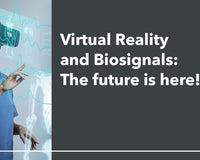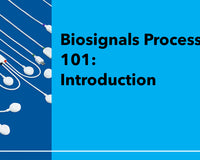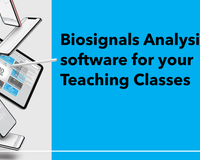Virtual Reality (VR) applications are on the rise and Meta's recent development is pushing VR applications into new fields outside of the video game and serious games realms into the Metaverse as a social space.
VR continues to be a hot topic among many research fields often with the goal of improving user comfort (e.g. overcoming motion sickness) or improving the immersiveness of the VR experience. Although those are certainly key elements of a fun VR gaming or social space experience, they are of even greater importance when applied within the contexts of serious games including training simulations or for therapeutic use.
Biosignals-powered biofeedback tools are common companions of such applications to closely monitor the user’s comfort, health, and emotional states.
In this blog post, we’ll explore two of PLUX users and their experiences with biosignal sensors to help you get started with biosignalsplux and our Unity API for your next VR project.
JeL: Connecting Through Breath in Virtual Reality
John Desnoyers-Stewart et al. (2019) created JeL: a bio-responsive immersive installation for interpersonal synchronization through breathing, a respiration-centered biofeedback application that aims to achieve the physiological synchrony of two participating users. The goal of the researchers was to create a bio-responsive application to encourage self-awareness, feeling of connectedness, and pro-social and pro-environmental attitudes.
In this virtual underwater experience, each user is equipped with a biosignalsplux Respiration Sensor. The recorded real-time sensor data is mapped onto the motions of two virtual jellyfish that act as biofeedback tools to achieve respiratory synchrony between the users. A virtual coral placed between the jellyfish grows during the VR experience.
The catch? The growth is conditioned by the respiratory synchrony between the users! The higher the synchrony, the greater the growth of the coral.
The results show that respiratory synchrony is achievable with the presented setup and highlights the importance of visual biofeedback to achieve this goal.
Although further adjustments to this setup would be required to facilitate its use with inexperienced biofeedback users, the presented project does show how biofeedback solutions could be used to improve the feeling of connectedness through biosignal synchrony between users in virtual spaces.
Find out more about this creative approach in their published research paper and in the YouTube video below.
An Emotionally Augmented Metaverse
Social VR experiences may benefit from beautifully designed virtual environments but become truly immersive if users have the ability to have emotionally rich interactions. For this, emotions have to be identifiable in the first place.
In the research paper presented by Leonardo Angelini et al. (2022), the researchers aimed to create a general-purpose framework for visualizing, recording, and synchronizing user experiences in virtual environments using biosignals.
For this, users explored a virtual dungeon and, after a few minutes of exploration, were confronted by a scary event to trigger an emotional response. Their natural biosignal responses have been tracked using biosignalsplux and a set of relevant sensors including:
-
Electrocardiography (ECG) to monitor heart rate alterations,
-
Electrodermal Activity (EDA) to track emotional responses,
-
Electromyography (EMG) on the neck to measure muscle relaxation and tension as a measure of the overall relaxed state of the user,
-
Respiration and motion.
The proposed work shows that the framework achieves its goal of how to record biosignals as a measure of identifying user emotions in VR applications using Unity and biosignalsplux. Its ultimate goal is to contribute to the development and design of emotionally augmented VR experiences, including the Metaverse, as detected emotions could be shared between users as an additional layer of interaction.
Find out more in their published research paper.

Conclusion
Virtual Reality, including the Metaverse, continue to gain popularity by creating virtual spaces that intend to expand our experience into the digital realm.
However, by stepping into the virtual world, researchers question how the limited options for sharing our emotions, which play an essential role in our communication, could limit the immersive feeling of the VR experience. The presented papers show creative and functional approaches that can help you overcome these limitations in VR.
Continue to learn more about biosignals and their use in VR in the papers below and stay tuned for future biosignals VR adventures in the Metaverse!
Learn more about biosignals in VR










